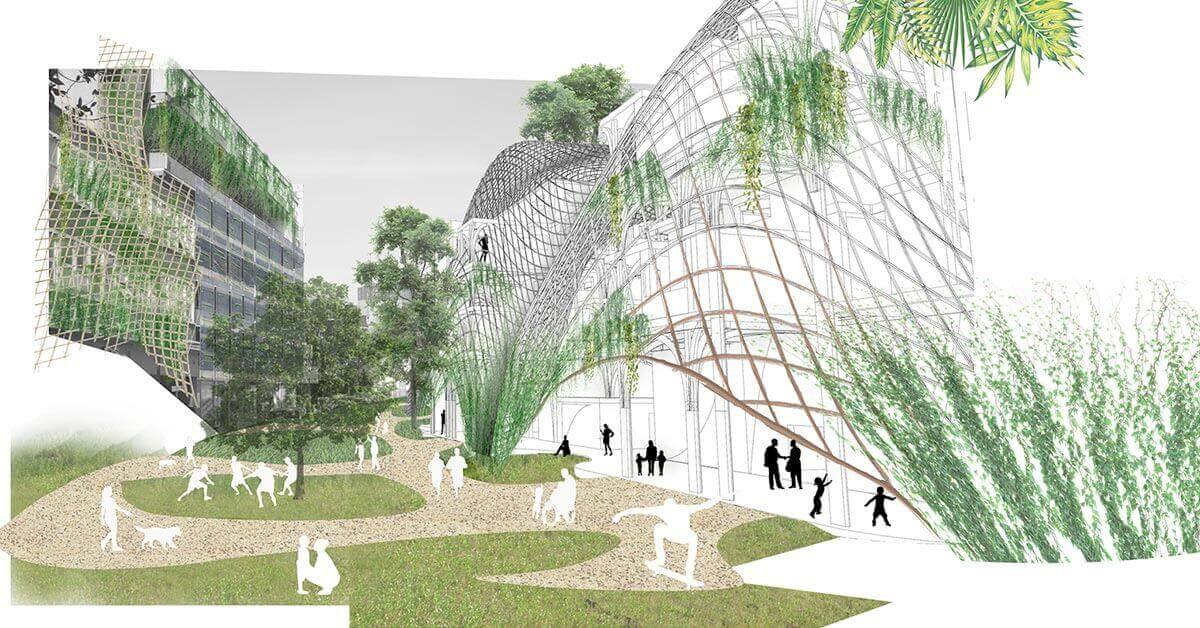
Urban design is the art and science of shaping the physical environment of cities, towns, and communities. It’s the practice of creating functional, beautiful, and sustainable urban spaces that cater to the needs of the people who inhabit them.
Want to change the world? Join a growing community, dedicated to improving the towns and cities of tomorrow. Gain the knowledge and skills to make a meaningful impact with our online MA Landscape Architecture Studies programme.
Why is urban design important?
Urban design plays a crucial role in forming communities and enhancing our quality of life.
Well-designed urban spaces foster social interaction, encourage physical activity, and build a spirit of belonging among residents. Factors including effective transportation, land use, public spaces, and infrastructure all help create vibrant, liveable cities that meet the needs of a diverse population.
As well as driving economic growth by attracting businesses, tourists, and investments, thoughtful urban design should also have a positive impact on the environment.
Through the incorporation of sustainable practices and green infrastructure, such as parks, gardens, and green rooves, cities can mitigate the effects of climate change, improve air and water quality, and provide much-needed habitats for wildlife.
What’s the relationship between urban landscape design and urban design?
Urban landscape design is an integral part of the broader field of urban design. It focuses specifically on the planning, design, and management of open spaces within urban areas. From parks and plazas to streetscapes and waterfronts, these public areas contribute to the overall character and functionality of a town or city.
Urban landscape design considers a range of factors, including aesthetics, practicality, accessibility, and sustainability. It aims to create outdoor environments that are visually appealing, environmentally friendly, and socially inclusive. By integrating natural elements like trees, plants, and water features with architectural elements, urban landscape design enhances the overall urban experience and nurtures a connection with nature.
Beyond their aesthetic appeal, successful urban landscape designs address the specific needs and aspirations of the community. They actively promote social interaction and provide opportunities for recreation and relaxation. They might serve as gathering points for cultural events, markets, and celebrations, fostering a sense of community pride and collective identity.
Examples of successful urban landscape design
Throughout history, we’ve witnessed many instances of urban landscape design that have successfully reshaped towns and cities into more liveable and sustainable environments.
Take the High Line in New York City, for example. Repurposed from a historic elevated railway, the High Line has undergone a remarkable transformation into a stunning urban park. Offering breath-taking views, green spaces, and recreational areas, it caters to residents and visitors alike. Its innovative design has revitalised the surrounding neighbourhood and become a global inspiration for adaptive reuse projects.
Another noteworthy case is Singapore’s Gardens by the Bay. This iconic urban park showcases the integration of nature and technology, featuring futuristic Supertrees, flower domes, conservatories, and themed gardens. Not only does it provide residents and tourists with a unique recreational space, but it also serves as an education and research hub for sustainable urban development.
Cheonggyecheon Stream in Seoul, South Korea, is more than just an example of urban restoration; it’s also a remarkable symbol of the city's commitment to sustainability. By removing an elevated highway and restoring the stream that once flowed beneath it, the Cheonggyecheon project rejuvenated a neglected and polluted urban area. Today, the stream acts as a green artery that draws both locals and outside visitors, providing a tranquil oasis amid the bustling city.
The project has environmental benefits too, reducing pollution levels and mitigating the urban heat island effect, while attracting diverse flora and fauna. It also pays homage to Seoul's past by preserving traditional elements like historic bridges and stone walls, enhancing the sense of cultural continuity.
These examples demonstrate the transformative potential of urban landscape design in creating spaces that are both functional and visually captivating. By prioritising the needs of the community and incorporating sustainable practices, these projects have become landmarks in their respective cities and garnered international recognition for their innovation and success.
Ready to find out more?
This is just the start. If you’re fascinated by urban design, explore this field in more depth with the online MA Landscape Architecture Studies programme. Discover how you can use your skills and knowledge to help build a healthy and equitable relationship between people and the planet.
Featured image credit: Charlotte Harvey
Related posts
The difference between architecture and landscape architecture
Discover the key differences between architecture and landscape architecture, as well as the...
Read the storyWhat’s green & blue infrastructure planning?
Discover the power of green and blue infrastructure planning to create sustainable, resilient, and...
Read the storyHow can landscape architecture improve health?
Learn about the concept of healthy landscapes and their impact on physical and mental health.
Read the storyStart your creative journey here.
Want to chat or ask a few questions? Fill this in and we’ll give you a call back.
